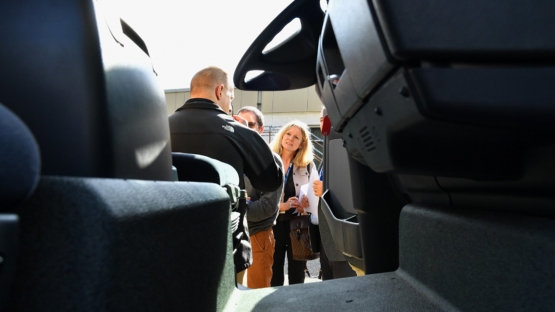Non-medical human imaging is the use of radiation to screen people for purposes other than medical diagnosis, medical treatment or biomedical research. Ensuring its safe use is the focus of the recently issued IAEA Safety Guide on this subject.
Growing security concerns globally have seen an increase in non-medical human imaging — such as screening of people to detect concealed objects, for instance prior to boarding an aircraft or when visiting a prison or to determine the presence of drugs in the bodies of suspected drug couriers.
“The biggest challenge regarding the use of non-medical human imaging is justification,” said Olga German, IAEA Regulatory Standards Specialist. “Governments have the responsibility to decide on a case-by-case basis if these uses of radiation are justified and, if so, ensure that proper controls and regulations are in place.”
For all such justified procedures, this Safety Guide provides detailed guidance, based on the experience of national authorities, on how to safely use X-ray generators and other types of radiation sources for inspection purposes and for non-medical human imaging. It provides detailed information on this subject area including types of radiation sources used in inspections, various types of inspection devices, framework for radiation protection and safety, and application of radiation protection principles.
“There is always a need to balance individual risks against societal benefits for the many potential uses of non-medical human imaging related to, for example, national security,” said German.
Sometimes, using radiation is not the most appropriate technology. Additional factors need to be taken into account when dealing with the exposure of children and pregnant women.
Often non-medical human imaging procedures are conducted by persons who have little knowledge of radiation protection, such as security guards, police officers or border control officers. Operators of equipment used in non-medical human imaging need to be adequately trained to protect themselves and members of the public from unintended exposure.
The type of equipment used for diagnostic radiology in medicine may be used for example for detection of drugs. When non-medical human imaging is performed in medical establishments, specific imaging protocols need to be developed for this purpose.
Governments should ensure that the uses of radiation for non-medical human imaging that are deemed justified are subject to a thorough system of protection and safety, the guide concludes.
This Safety Guide is part of a series of Safety Guides that have been published, or are in preparation, for facilities and activities that cover the use of radioactive sources and X-ray generators in industrial uses of ionizing radiation, for example industrial irradiators, industrial radiography, radioisotope production facilities, nuclear gauges, well logging and the use of radiation sources in research and education.
It is part of the IAEA mandate to assist its Member States with implementation of the IAEA Safety Standards and the new IAEA Safety Guide.




